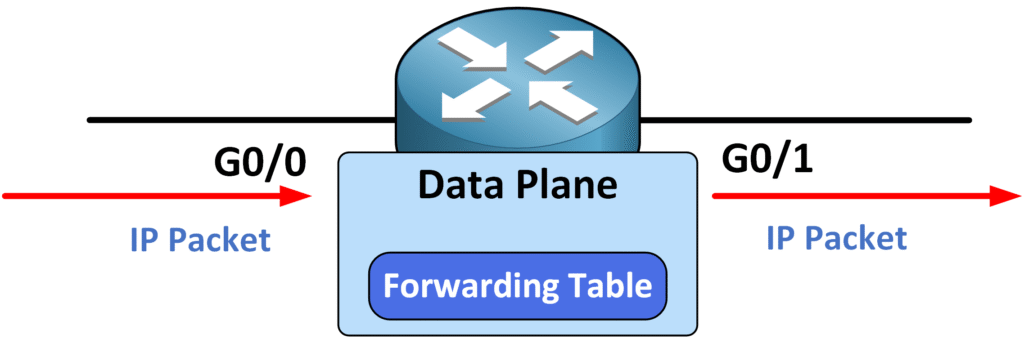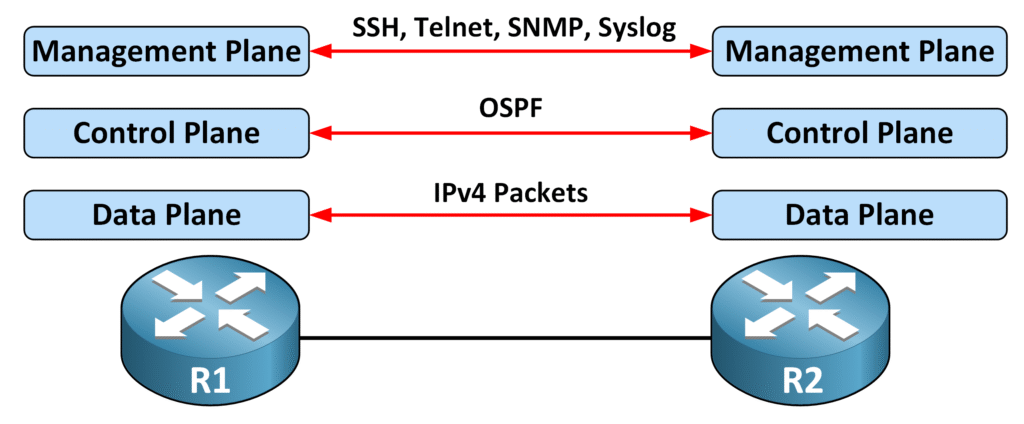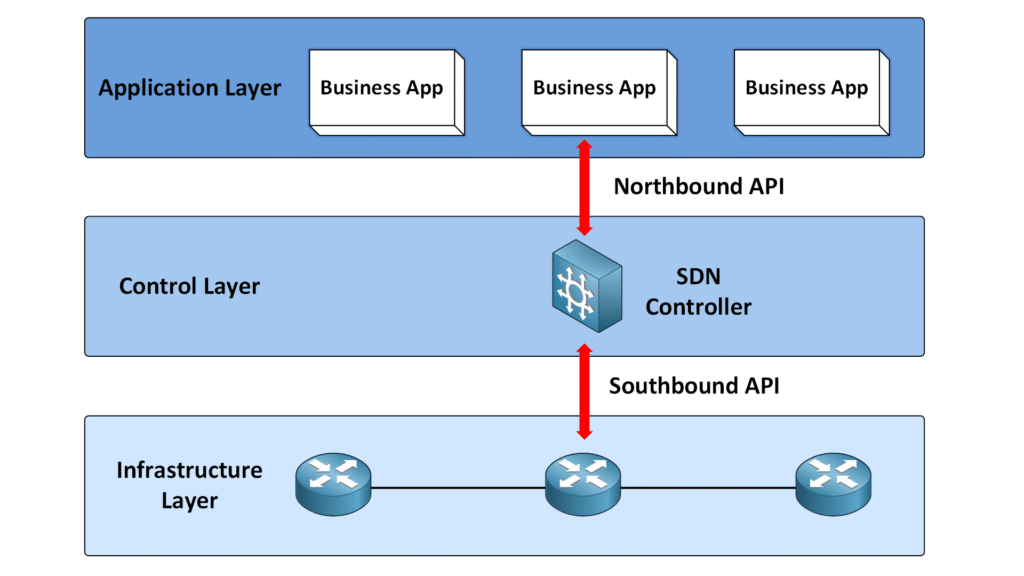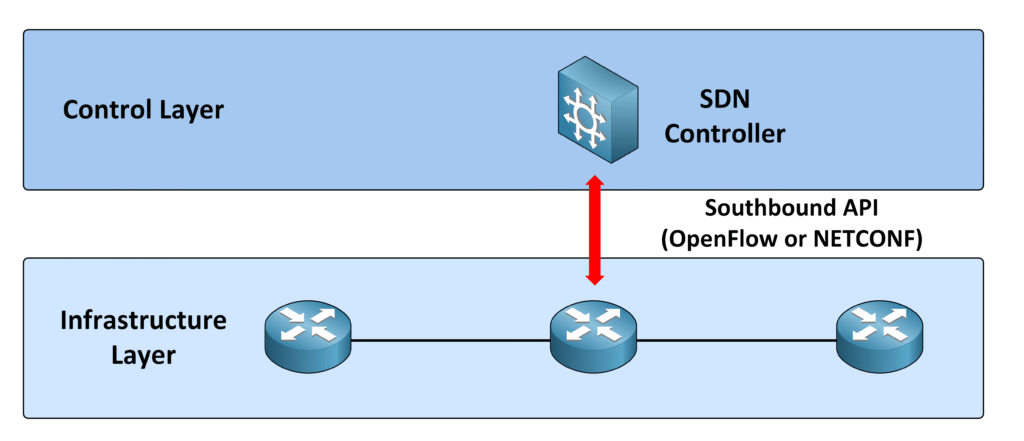Software Defined Networking (SDN)
SDN (Software-Defined Networking) is a key concept in the CCNA curriculum ! It introduces a new way to manage networks by separating the control functions from the hardware, making networks more flexible and easier to automate.
To understand how SDN brings these improvements, let’s first explore Traditional Networking together.
1. Traditional Networking
🔍 Understanding Traditional Networking
Traditional networking relies on dedicated hardware devices, such as routers and switches, each with its own Control Plane, Data Plane, and Management Plane. These components work together to ensure network communication, but they also come with limitations in scalability, automation, and flexibility.
🔍 Data Plane
The Data Plane (or “forwarding plane”) is responsible for forwarding packets based on routing decisions made by the Control Plane. It ensures packets are transmitted efficiently to their correct destinations.

In traditional networking, the Data Plane relies on a Forwarding Table generated by the Control Plane. Each packet is inspected to determine its next-hop destination, ensuring proper data delivery.
🔍 Control Plane
The Control Plane makes routing and forwarding decisions. It builds the Routing Table using both:
- Dynamic Routing Protocols (e.g., OSPF, EIGRP), which automatically adapt to network changes.
- Static Routes, manually configured by network administrators.
Additionally, the ARP Table resolves IP addresses to MAC addresses for Layer 2 communication.

By maintaining these tables, the Control Plane enables efficient packet forwarding while minimizing CPU overhead.
🔍 Management Plane
The Management Plane allows network administrators to configure, monitor, and manage network devices via protocols like SSH, Telnet, or HTTP/HTTPS.

⚠️ Limitations of Traditional Networking
Traditional networking is based on a distributed control model, where each device (router or switch) operates independently, making decisions locally. This approach has several limitations:
- Complex Management: Configuring each device separately is time-consuming and error-prone.
- Lack of Automation: Manual configurations increase operational overhead.
- Limited Scalability: Growing networks require extensive manual effort.
- Vendor Lock-in: Proprietary hardware and software limit flexibility.

Next Steps: In the next chapter, we’ll explore how SDN transforms traditional networking by centralizing
2. Introduction to SDN
Concept of SDN
Software-Defined Networking (SDN) is a modern approach to network management that separates the Control Plane from individual network devices and centralizes it in a single, software-based SDN Controller.
In traditional networks, each device (like routers and switches) has to make its own routing and configuration decisions. SDN changes this by moving all decision-making to the SDN Controller.

With SDN, the SDN Controller manages all network control decisions, such as routing paths, policies, and configurations. Network devices themselves are simplified; they operate only on the Data Plane, which handles packet forwarding. In other words, devices follow instructions from the Controller without making independent decisions.
This centralized control simplifies network management. Instead of configuring each device individually, administrators can apply changes across the entire network from the SDN Controller. By separating the Control Plane from devices, SDN makes networks more efficient, scalable, and easier to automate.
✅ Key Benefits of SDN
- Simplified Management: Centralized control makes configuration and policy changes easier, reducing complexity.
- Automation and Programmability: SDN allows for automation, enabling dynamic responses to network demands and reducing manual work.
- Improved Visibility: A unified view of network performance helps administrators monitor and troubleshoot more effectively.
- Scalability: SDN easily adapts to support new devices and increased traffic.
- Vendor Neutrality: SDN allows interoperability between different vendor devices, giving organizations flexibility in hardware choices.
Next Steps: Now that you understand SDN’s core concept and benefits, let’s explore its architecture and how it operates in real-world networking environments.
3. SDN Architecture
The Software-Defined Networking (SDN) architecture consists of three main layers:
- Application Layer
- Control Layer
- Infrastructure Layer
Each layer has a specific role, ensuring efficient communication and simplifying network management.
🔍 SDN Architecture

🔍 Application Layer
The Application Layer includes network applications and services that interact with the SDN Controller.
💡 Examples of SDN applications:
- Network monitoring tools
- Security systems
- Automation platforms
These applications communicate with the SDN Controller to:
✅ Request network resources
✅ Define policies
✅ Monitor network performance
This layer enables applications to control network behavior in a customized way.
🔍 Control Layer
The Control Layer hosts the SDN Controller, which acts as the brain of the network.
The SDN Controller:
✅ Makes decisions about routing, policies, and configurations
✅ Gathers information from network devices
✅ Responds to requests from the Application Layer
⚡ Why is centralization important?
- Provides a global network view for optimal path selection
- Ensures consistent policy enforcement across all devices
- Enhances network responsiveness to changes
🔍 Infrastructure Layer
The Infrastructure Layer consists of the physical network devices, such as switches and routers, which handle packet forwarding.
🔹 Unlike traditional networks, these devices no longer make independent decisions. Instead, they simply forward packets based on instructions from the SDN Controller.
Why separate control from hardware?
✅ Simplifies network devices
✅ Optimizes performance
✅ Enhances automation capabilities
🔍 Northbound and Southbound APIs
Application Programming Interfaces (APIs) enable communication between SDN layers.
🛠️ Northbound API
The Northbound API connects applications to the SDN Controller.
✅ It allows applications to:
- Request network resources
- Apply policies
- Retrieve network performance data
The REST API is one of the most commonly used protocols for this communication.

🛠️ Southbound API
The Southbound API connects the SDN Controller to the Infrastructure Layer (network devices).
✅ It enables the SDN Controller to send instructions and configure network devices. Common Southbound API protocols include:
- OpenFlow: A widely used protocol that defines paths and forwarding rules for network devices.
- NETCONF: A protocol for configuring and managing network devices at a granular level.

4. Conclusion
SDN revolutionizes networking by centralizing control, automating management, and enhancing scalability.
- Key Takeaways
✅ Traditional networks are complex, manual, and hard to scale.
✅ SDN separates the Control Plane, simplifying management and enabling automation.
✅ Northbound APIs connect applications, while Southbound APIs control devices.
✅ SDN is widely used in cloud computing, data centers, and enterprise networks.
